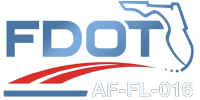Aluminum Welding in Florida: How to Choose the Most Suitable Method
Aluminum is a cornerstone of Florida’s marine, aerospace, and construction industries due to its lightweight, corrosion-resistant properties. However, welding aluminum requires specialized techniques to avoid common pitfalls like oxidation and distortion. Whether you’re working on boat repairs in Miami or fabricating aerospace components in Orlando, this guide will help you choose the right Aluminum welding approach for weldable aluminum and ensure durable, high-quality results.
Why Aluminum Welding is Unique
Aluminum’s high thermal conductivity and low melting point make it challenging to weld. Unlike steel, aluminum forms an oxide layer that melts at a higher temperature than the base metal, leading to impurities if not properly managed. Understanding these traits is key to selecting the best method for weldable aluminum projects.
7 Tips for TIG Welding Aluminum
Tungsten Inert Gas (TIG) welding is a top choice for precision aluminum work. Follow these tips to master the process:
-
Use AC Current: Alternating current breaks up the oxide layer and provides a stable arc.
-
Choose the Right Tungsten: Thoriated or lanthanated tungsten electrodes handle high heat better.
-
Pre-Clean Thoroughly: Remove oils, dirt, and oxides with a stainless-steel brush or chemical cleaner.
-
Set Proper Gas Flow: Use 100% argon gas at 15–25 CFH to shield the weld pool.
-
Control Heat Input: Aluminum dissipates heat quickly—keep travel speeds consistent to avoid warping.
-
Use a Foot Pedal: Adjust amperage mid-weld for better control on thin materials.
-
Select the Correct Filler Rod: 4043 and 5356 alloys are common; match the filler to your base metal.
TIG welding excels for shaped extrusion punching and shaped extrusion machining projects requiring clean, precise joints.
How to Choose a Welding Machine for Aluminum
Picking the right equipment ensures efficiency and quality:
-
TIG Welders: Ideal for thin materials and intricate work. Look for AC/DC capability and pulse settings.
-
MIG Welders: Faster for thick materials; use a spool gun to prevent wire feed issues.
-
Multi-Process Machines: Versatile for shops handling both aluminum and steel.
Key Features:
-
Adjustable Amperage: Critical for managing aluminum’s heat sensitivity.
-
High-Frequency Start: Reduces contamination in TIG welding.
-
Portability: Useful for on-site repairs in Florida’s marine industry.
Which Type of Welding is Most Suitable for Aluminum?
1. TIG Welding (GTAW)
-
Best For: Precision, thin materials, and aesthetic welds (e.g., custom shaped extrusion machining parts).
-
Current Type: AC for cleaning action; DCEN for thicker materials.
2. MIG Welding (GMAW)
-
Best For: High-speed, thick aluminum (e.g., boat hulls or structural components).
-
Use: Push-pull guns or spool guns to avoid wire tangling.
3. Stick Welding (SMAW)
-
Rarely Used: Produces weaker welds and requires significant skill.
4. Laser Welding
-
Industrial Use: High-precision applications like aerospace.
For most Florida projects, TIG or MIG welding strikes the best balance of quality and efficiency.
Common Challenges & Solutions in Aluminum Welding
-
Oxidation: Clean surfaces pre-weld and use argon gas shielding.
-
Porosity: Avoid moisture in filler rods; store them in a dry environment.
-
Cracking: Use filler alloys like 4043 or 5356 to reduce thermal stress.
-
Distortion: Tack-weld components and clamp securely to manage heat.
Applications in Florida’s Key Industries
-
Marine: Welding boat rails, hulls, and shaped extrusion punching components.
-
Aerospace: Fabricating lightweight frames and engine parts.
-
Construction: Joining weldable aluminum beams and panels for coastal buildings.
FAQs
Q: What is the best type of welding for aluminum?
A: TIG welding (GTAW) is ideal for precision, while MIG suits thicker materials.
Q: Which current is best for gas tungsten arc welding (GTAW) of aluminum?
A: AC current cleans the oxide layer and stabilizes the arc.
Q: What’s the difference between 5356 and 5183 filler rods?
A: 5356 offers higher strength and is ideal for marine use, while 5183 resists corrosion in harsh environments.
Q: What’s the biggest problem with welding aluminum?
A: Oxidation. Proper cleaning and shielding gas are critical to prevent weak, porous welds.
Conclusion
Choosing the right Aluminum welding method in Florida depends on your project’s thickness, precision needs, and environment. TIG welding reigns supreme for delicate tasks like shaped extrusion machining, while MIG offers speed for heavy-duty applications. By understanding weldable aluminum properties and investing in the correct tools, you can achieve strong, lasting welds that withstand Florida’s demanding conditions.
Need Expert Advice? Consult Florida’s certified welding professionals to ensure your project meets industry standards.


